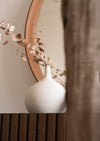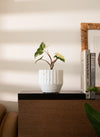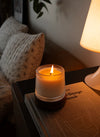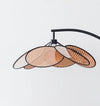I walked into a high-end interior showroom a few years ago showcasing a “minimalist dream” collection. White walls, sleek furniture, and zero clutter- it was visually stunning but felt more like an art exhibit than a home. That moment made me wonder: Has minimalism gone too far?
Minimalist design has shaped homes for decades, praised for its clean aesthetics, functionality, and timeless appeal. But does the pursuit of simplicity sometimes make spaces feel cold and uninspiring?
This debate, "Less is More" vs. "Less is a Bore," has been ongoing in interior design. Some believe minimalism creates harmony, while others argue it strips away warmth and personality. So, which side is right? Let’s explore the roots, benefits, and critiques of minimalist design in home decor.
The Origins of Minimalist Design
Minimalism isn’t just a fleeting trend—it’s a timeless design philosophy that has evolved over centuries. From traditional Japanese aesthetics to modern architecture, minimalism has always been about intentional living and functional beauty.
1. Japanese Influence: The Art of Empty Space
Japanese interiors embrace "Ma"—the idea that empty space is just as important as objects. Traditional homes feature neutral tones, clean lines, and carefully chosen decor that serves a purpose. This philosophy is the foundation for modern minimalism.

2. Bauhaus & Modernist Architecture: Function Over Form
In the 1920s, the Bauhaus movement revolutionized design by removing unnecessary ornamentation. Architect Ludwig Mies van der Rohe introduced the famous “Less is More” philosophy, proving that simple can be powerful.
3. Scandinavian Simplicity: Warm & Livable Minimalism
Unlike the stark minimalism of early modernism, Scandinavian design introduced natural materials, soft lighting, and cozy textures, ensuring that minimalism felt inviting rather than sterile.

Today, minimalism influences everything from home decor to technology and fashion, but is it always the best approach?
Why ‘Less is More’ Works in Home Decor
Minimalism is more than an aesthetic—it’s a mindful way of living. Here’s why it still works in modern home interiors:
1. Timeless Appeal
A minimalist home never feels outdated. Neutral palettes, clean lines, and high-quality materials ensure long-lasting elegance compared to trend-driven designs.
2. Enhanced Functionality
Removing unnecessary clutter improves flow and usability. Minimalist spaces make everyday tasks easier, whether it’s a well-organized kitchen or a serene bedroom.
3. A Calm, Stress-Free Environment
Studies show that clutter increases stress. A minimalist home fosters mental clarity, making it ideal for relaxation and productivity.
But minimalism isn’t perfect. Can stripping away too much leave a space feeling uninspired?
When ‘Less is More’ Becomes ‘Less is a Bore’
While minimalism has its strengths, extreme minimalism can sometimes feel cold, impersonal, and even dull. Here’s why:
1. Sterile, Uninviting Spaces
A minimalist home that lacks warmth—think plain white walls, stark furniture, and no personal touches—can feel more like a showroom than a cozy retreat.
2. Lack of Personality and Uniqueness
Many minimalist interiors start looking identical—neutral colors, sleek surfaces, and little variation. This can strip away the unique character that makes a home feel personal.
3. Over-Simplification Can Feel Boring
Our home should tell a story. Extreme minimalism sometimes removes the soul of a space, making it feel lifeless rather than stylish.
So, if too much clutter overwhelms and extreme minimalism underwhelms, what’s the solution?

Striking the Right Balance: Minimalism with Warmth
Many designers are embracing "Warm Minimalism"—a style that blends simplicity with warmth, texture, and personality.
1. The Rise of Warm Minimalism
Instead of stark, cold minimalism, warm minimalism incorporates:
- Natural materials like wood, linen, and stone.
- Earthy tones instead of clinical whites.
- Soft lighting to create a cozy ambiance.
- Functional yet decorative elements that add character.
2. Minimalist Design with Statement Pieces
A well-balanced minimalist home isn’t empty—it’s curated. Adding one bold art piece, textured furniture, or vintage accents can make a space both sleek and inviting.
3. Design With Intent, Not Just Aesthetic
Minimalism isn’t about deprivation; it’s about thoughtful curation. Instead of removing everything, keep what adds value—functionally and emotionally.
The Verdict: What’s Your Take?
Minimalism is not a one-size-fits-all approach. Some people thrive in sleek, clutter-free spaces, while others prefer a mix of textures and layers.
At its core, great home decor isn’t about choosing minimalism or maximalism—it’s about balance. Your home should reflect your personality, lifestyle, and comfort.
So, where do you stand?
- Do you love the clean, clutter-free aesthetic of "Less is More"?
- Do you crave warmth, character, and a touch of eclectic charm, believing "Less is a Bore"?
- Or do you prefer a hybrid approach—curated simplicity with personality?

Final Thoughts
Minimalism isn’t about removing everything—it’s about keeping what matters. Whether you love open spaces or a more layered approach, your home should feel inviting, functional, and uniquely yours.






